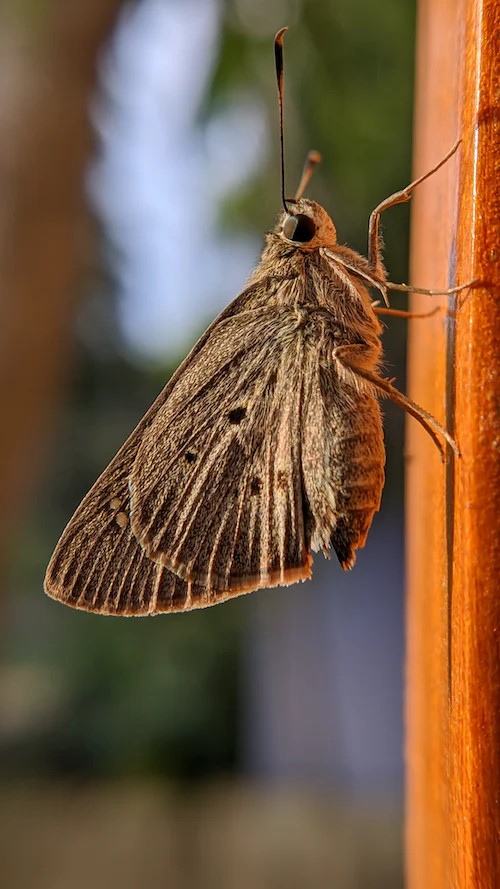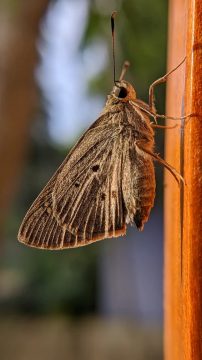Wisconsinites are no strangers to swathes upon swathes of corn fields, whispering in a slight breeze but otherwise often so eerily quiet that it is said you can hear the corn grow. Rice fields, on the other hand? “You can walk through and hear frogs chorusing and birds chirping – it’s actually pretty noisy!” explains Professor of Biology Jodi Sedlock of the biodiverse rice fields she has frequented over the years.
Over her 21 years at Lawrence, Sedlock has travelled to Southeast Asia to study bat conservation, either in their cave habitats or out in the rice fields. In recent years, her focus has been on acoustic ecology, a subfield of sensory ecology, which for her means “eavesdropping on bats” with ultrasonic microphones. As it turns out, rice fields are just as noisy in the ultrasonic range as in the sonic, and these frequencies are the ones that concern bats, and therefore Sedlock.
In 2019, Sedlock took a special interest in the ultrasonic concert produced by the insects that bats feed on, many of which are crop pests. “Oh my gosh! What do bats think about this?” she wondered eagerly. “Just like for us, background noise can really influence our behavior, right? Noise may mask what you’re trying to say, or it may just be distracting, or you might leave.” These are all options for bats as well, but a bat exodus would spell trouble for rice field ecosystems and their farmers.
Sedlock hypothesized that the incredibly loud call of the katydid – a relative of the grasshopper with an ultrasonic call of 90-100 decibels, which is “airplane landing kind of loud” – may deter bats from the area as it overlaps with the frequencies used to echolocate, rendering the bats unable to navigate. In a study that made the cover of Functional Ecology, Sedlock and her colleagues set up a “phantom chorus” of insects through ultrasonic speakers in rice fields in the Philippines. They found that bat species with echolocation frequencies that overlapped with the insect calls did, in fact, avoid flying low over that area.
The summer after this research, though, travel was restricted due to the COVID-19 pandemic, and Sedlock had to find ways to continue her work from her lab at Lawrence. With a new focal species, her query became, “Well… what are moths thinking?” This question went on to inform the work that became Kayci King’s (‘23) senior experience before it continued over the summer and into this year with the help of Makenzy Dreher.
The species of moth that Sedlock and Dreher raise on campus, the fall armyworm, has evolved ears that detect the ultrasonic call of the bats that prey on them, flying erratically to avoid being eaten when they hear a threat. These moths’ larvae are a devastating pest in local corn fields, as well as globally.
A similar species of katydid to the ones that deterred bats in the Philippines can be found locally as well – even right in front of Seeley G. Mudd Library – and they just so happen to be ravenous for fall armyworm eggs. Sedlock and students set out to study the interactions between katydid calls and the fall armyworm’s’ egg-laying habits. After two years of fiddling with the experimental design, Sedlock’s lab settled on their research question this past summer: do the female moths avoid depositing their eggs on plants near where katydid calls originate?
A 3D-printed choice chamber, co-designed by Derartu Ahmed (‘21), allows female moths to choose to lay eggs on the side with ultrasonic speakers playing katydid calls, or on the opposite side of a sound barrier where it is much quieter. Not only have Sedlock and Dreher found that moths avoid laying eggs in the katydid-call sides of the chamber, but they also found that moths may only respond to one part of the katydid call, which Sedlock imitates as a “tick-tick-tick-buzz.”
The “ticks” overlap in frequency with bat echolocation calls, while the final “buzz” blends in with the general background noise of a field. “Their whole habitat is buzzing,” Sedlock explains. Based on preliminary data, it seems that the moths are focusing on the frequency of the “ticks” to efficiently gauge the presence of both predators – bats and katydids – without also having to react to a sound indistinguishable from benign environmental factors.
Sedlock continues her moth work this academic year, alongside senior Dreher, but plans to take a sabbatical next year to return to her beloved rice fields and bat caves in the Philippines. She confides that she is “excited to work with a different species,” after explaining how fall armyworm larvae must be separated to keep them from cannibalizing each other.
In her research on both sides of the globe, Sedlock’s driving questions are always about “how species have adapted to their acoustic environment, and how that environment modifies and determines species behavior,” a focus of the growing field of acoustic ecology. Her current work may inform sustainable alternatives to pesticides if acoustic species interactions can be exploited for pest control in agricultural settings.


